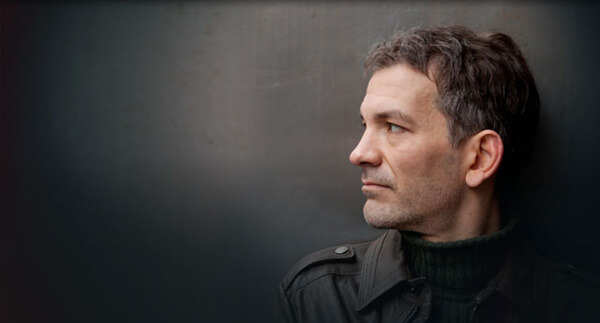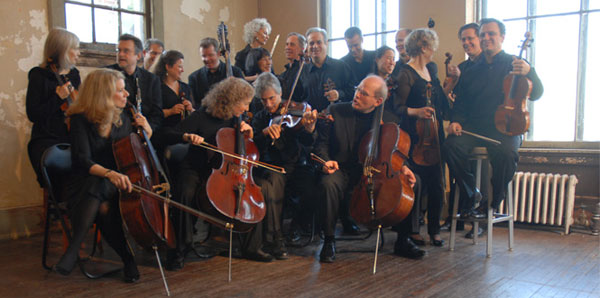
Composer/Pianist Brad Mehldau
 Sometimes, hearing elements from one genre of music performed in a new context can render their beauty more sharply. But in the performance of jazz pianist Brad Mehldau’s Variations on a Melancholy Theme by the composer and the Orpheus Chamber Orchestra at the Vienna Musikverein on Monday, November 12, 2012, the beauty of Mehldau’s sound concept was lost in translation, partially due to the orchestration, and partially because of a lack of compositional risk-taking. The Orpheus Chamber Orchestra, a 33-member strong group, performs without a conductor. In the other works on the program, Prokofiev’s Symphony No 1, Op. 25 and Mozart’s Symphony No 41 in C K551, they were very cohesive, with clean edges and a uniformity of interpretation. This democratic ensemble rotates its principal chairs on every piece, giving many members a chance to take the lead. This approach worked very well with the familiar repertoire, giving the performance the intimacy of a smaller-ensemble concert.
Sometimes, hearing elements from one genre of music performed in a new context can render their beauty more sharply. But in the performance of jazz pianist Brad Mehldau’s Variations on a Melancholy Theme by the composer and the Orpheus Chamber Orchestra at the Vienna Musikverein on Monday, November 12, 2012, the beauty of Mehldau’s sound concept was lost in translation, partially due to the orchestration, and partially because of a lack of compositional risk-taking. The Orpheus Chamber Orchestra, a 33-member strong group, performs without a conductor. In the other works on the program, Prokofiev’s Symphony No 1, Op. 25 and Mozart’s Symphony No 41 in C K551, they were very cohesive, with clean edges and a uniformity of interpretation. This democratic ensemble rotates its principal chairs on every piece, giving many members a chance to take the lead. This approach worked very well with the familiar repertoire, giving the performance the intimacy of a smaller-ensemble concert.
Brad Mehldau has had an instantly-recognizable improvisational style in the jazz world since the mid-1990s. His work on solo piano, in trios and small groups is marked by intricate, contrapuntal lines and a deeply alluring treatment of melodies. He has also written interesting and exquisite music for solo voice and piano, most notably songs for Renée Fleming and Anne Sofie von Otter.
Variations on a Melancholy Theme was originally written by Mehldau for pianist Kirill Gerstein, and this orchestration was commissioned by Orpheus. The piece began with the Melancholy Theme played by solo piano, an easy waltz with pop music tendencies. Throughout the variations, Mehldau capitalized on the democratic nature of the Orpheus ensemble by featuring most of the orchestra in solo roles on this theme, trading the song throughout the orchestra. He used many devices for varying the theme which bear strong resemblance to his improvisational playing: a solo instrument accompanied by left-hand jazz voicings arranged for wind or string groupings; long, melodic lines that snaked through tense, dominant-chord sounds before resolving to a relaxed major chord by the end of the form; an off-beat pedal tone under shifting chords, used to build excitement; running contrapuntal eighth-note lines in three or four voices.

Orpheus Chamber Musicians (photo credit: orpheusnyc.com)
Unfortunately, many of the elements of variation were great ideas that didn’t quite click, suffering from clumsy orchestration and a lack of adventurousness. Accompaniment voicings were heavy and muddy, as if the instrumental parts had been written without taking into account the weight that a note has on a bassoon versus on a piano, the reflex to constantly resolve chords at the end of phrases felt unnatural and unnecessary, and the counterpoint suffered from a lack of harmonic and rhythmic interest. Largely missing in the variations was Mehldau’s usually uncanny knack for spinning a melodic line, with most iterations of the melodic content being quite repetitive, as if the composer was afraid to stretch out. There were many lovely moments in the piece: an interesting viola solo accompanied by celeste, a clarinet duet built on shimmering tone clusters, a lengthy piano cadenza. But each of these events were erased immediately by big, unnecessary orchestral swells, as if apologizing for straying slightly from Mozart-era sounds. If the opportunity had been taken, many of these ideas could have grown into spectacular variations.
The ensemble performed well with Mehldau, navigating through the piece with only a few snags, and soloists sometimes adjusted their tone colours to meet the more aggressive jazz timbre required in some sections. The ensemble and Mehldau visibly enjoyed performing with each other. In spite of the translation problems with this specific piece, this is a concept worth repeating.























